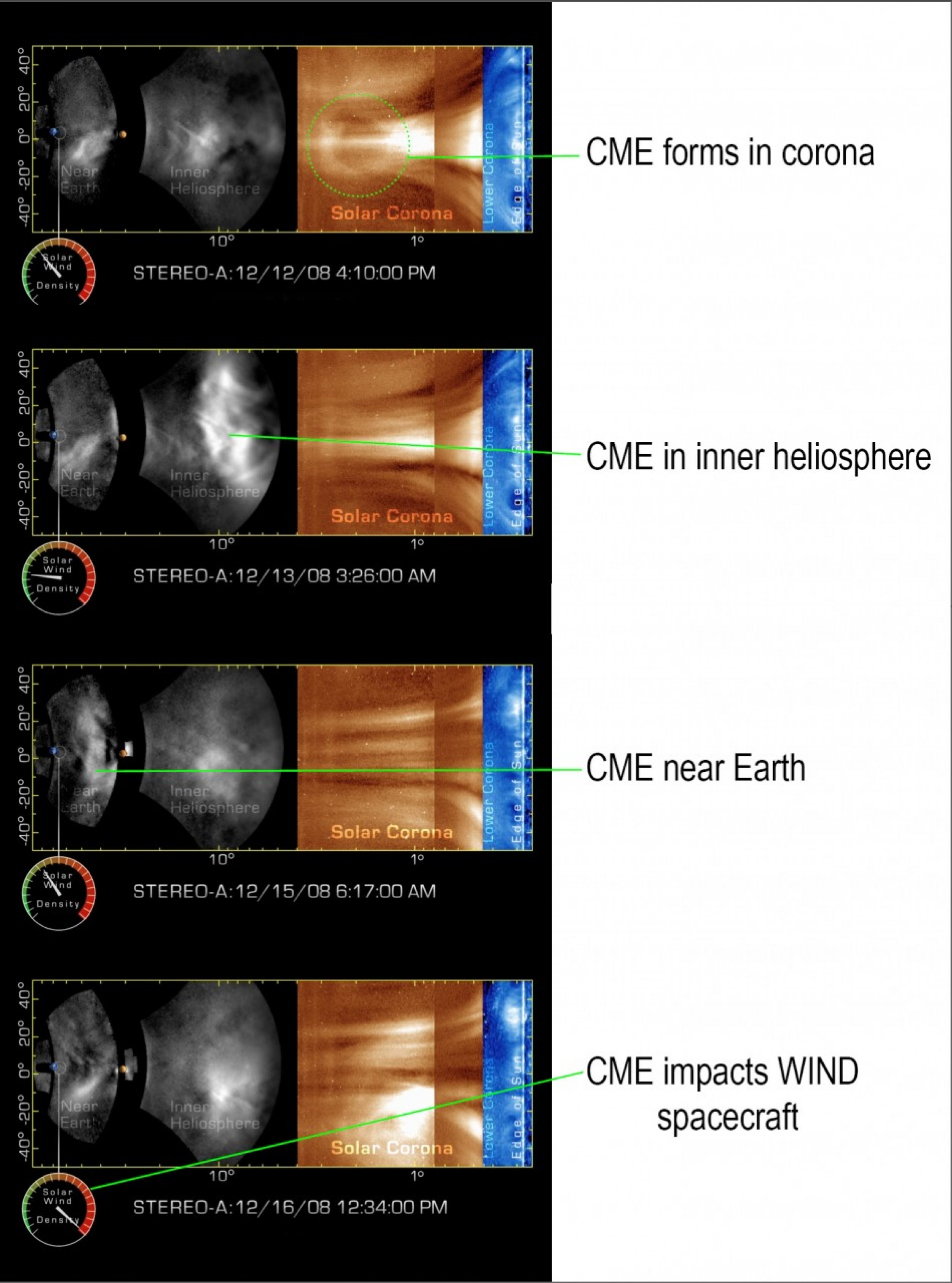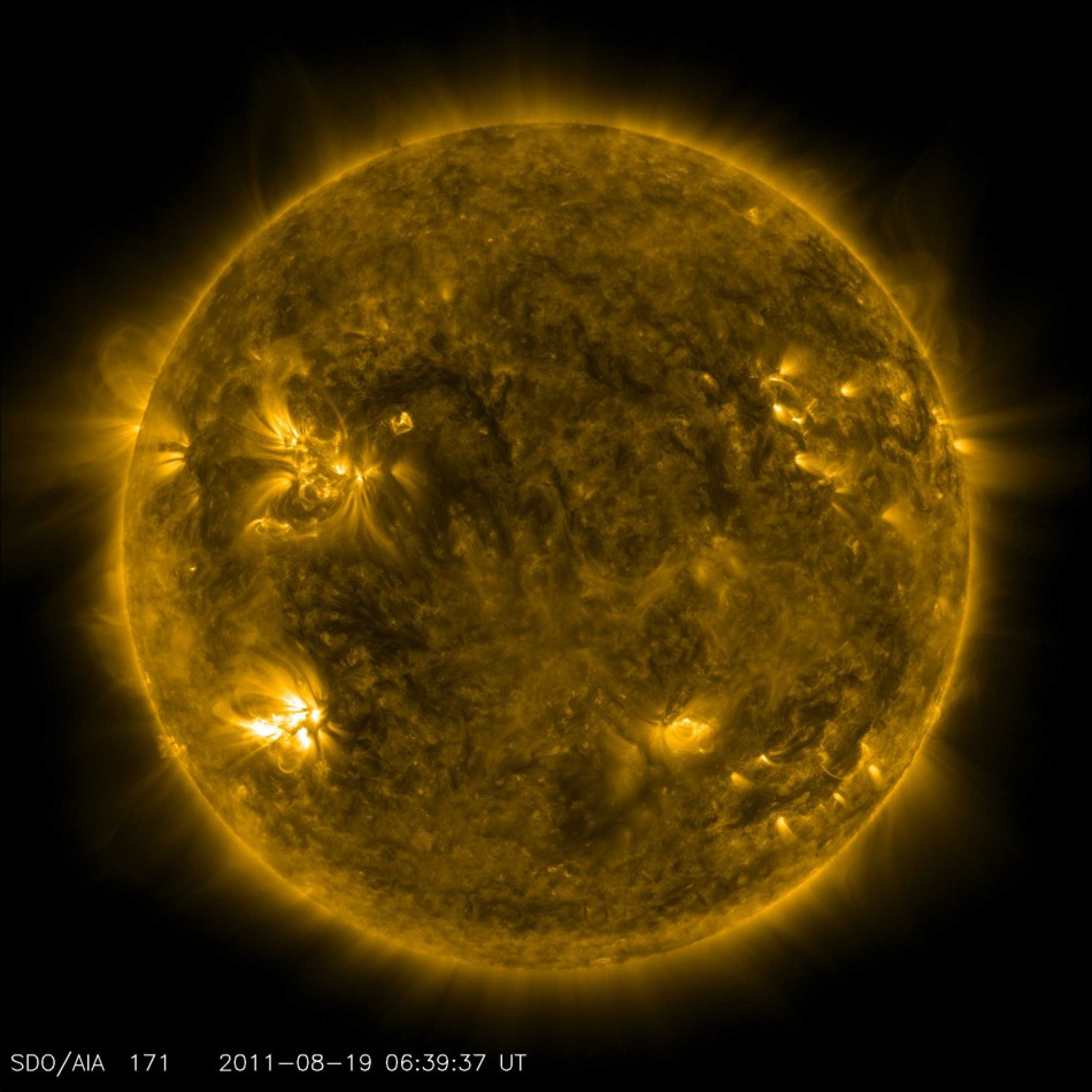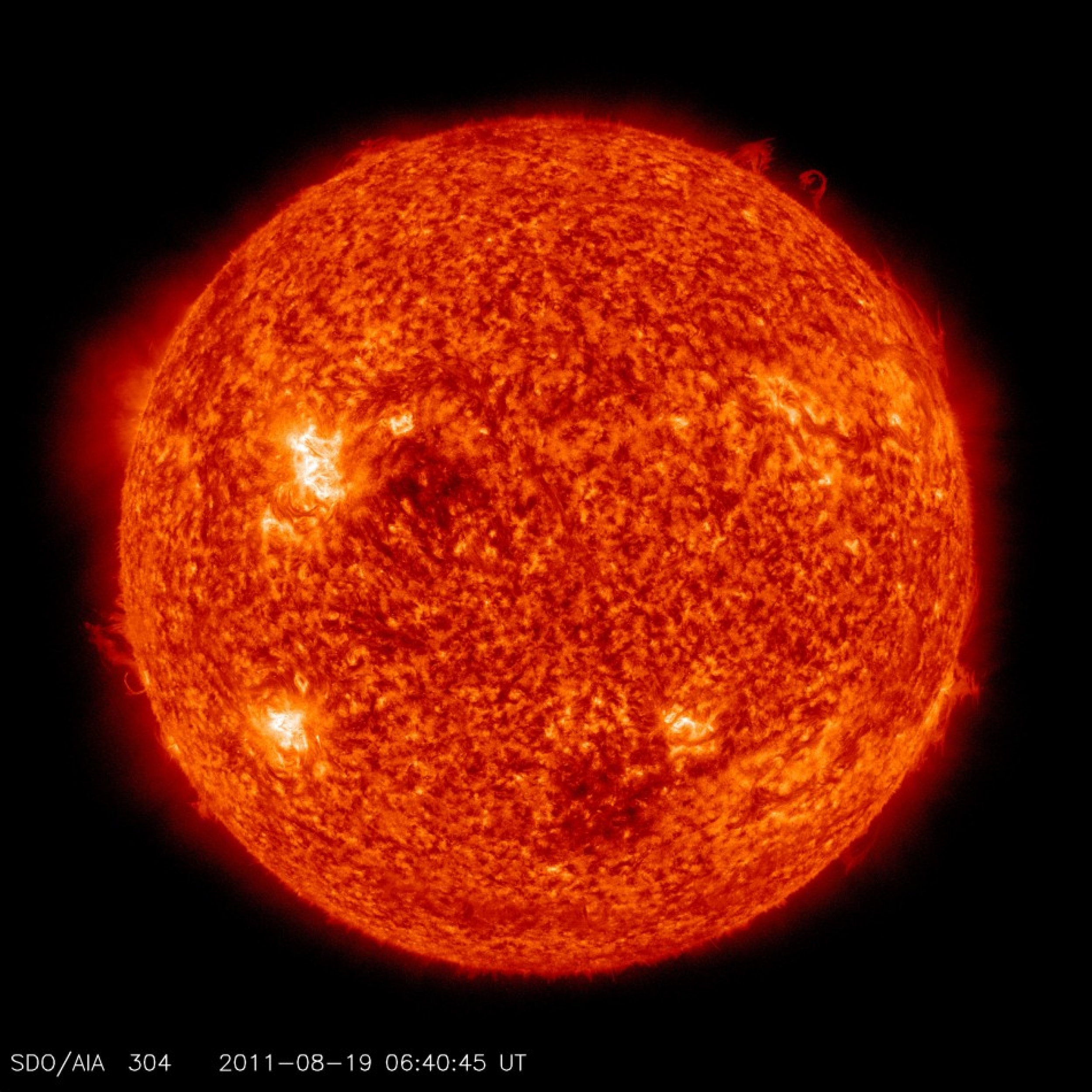NASA Tracks Solar Storm Engulfing Earth, Resolves 40-Yr-Old Mystery (PHOTOS, VIDEO)
Even as scientists are working on improving solar storm predictions, a NASA spacecraft with the latest data processing techniques has tracked a solar storm engulfing the planet for the first time.
A solar storm is caused when an intense burst of radiation comes from the release of magnetic energy associated with sunspots. Flares are the solar system's largest explosive events.
NASA's STEREO-A spacecraft has succeeded in tracking space weather events from their origin in the sun's corona to impact with the Earth, resolving a 40-year mystery about the structure of the structures that cause space weather and potentially dangerous solar storms.
STEREO-A is one of two spacecraft launched in 2006 to study solar activity from widely-spaced locations. At the time of the storm, STEREO-A was more than 65 million miles from Earth, giving it the big picture view other spacecraft in Earth orbit lack.
The latest findings assume significance as the National Oceanic and Atmospheric Administration (NOAA), a scientific agency that monitors atmospheric and ocean conditions, has predicted a state of maximum solar activity that may strike Earth, causing total darkness this decade.
NASA has released a movie that shows how the STEREO spacecraft turned and watched a solar storm engulf our planet. The movie stunned solar physicists, who say it could lead to important advances in space weather forecasting.
The solar storms, called Coronal Mass Ejections (CMEs), are being observed from NASA's twin Solar Terrestrial Relations Observatory, or STEREO, spacecraft launched in 2006. The duo represents a key component within a fleet of NASA spacecraft that enhances the capability to predict solar storms.
A coronal mass ejection happens when the outer solar magnetic fields are closed, often above sunspot groups, and the confined solar atmosphere can suddenly and violently release bubbles of gas and magnetic fields.
Previous spacecraft imagery did not clearly show the structure of a solar disturbance as it traveled toward Earth. As a result, forecasters had to estimate when storms would arrive without knowing the details of how they evolve and grow. New processing techniques used on STEREO data allow scientists to see how solar eruptions develop into space storms directed at Earth.
The movie sent chills down my spine, says Craig DeForest of the Southwest Researcher Institute in Boulder, Colorado. It shows a CME swelling into an enormous wall of plasma and then washing over the tiny blue speck of Earth where we live. I felt very small.
CMEs are billion-ton clouds of solar plasma launched by the same explosions that spark solar flares. When they sweep past our planet, they can cause auroras, radiation storms, and in extreme cases power outages. Tracking these clouds and predicting their arrival is an important part of space weather forecasting.
We have seen CMEs before, but never quite like this, says Lika Guhathakurta, program scientist for the STEREO mission at NASA headquarters. STEREO-A has given us a new view of solar storms.
When CMEs first leave the sun, they are bright and easy to see. Visibility is quickly reduced, however, as the clouds expand into the void. By the time a typical CME crosses the orbit of Venus, it is a billion times fainter than the surface of the full Moon, and more than a thousand times fainter than the Milky Way. CMEs that reach Earth are almost as gossamer as vacuum itself and correspondingly transparent.
Pulling these faint clouds out of the confusion of starlight and interplanetary dust has been an enormous challenge, says DeForest.
The NASA movies pinpoint not only the arrival time of the CME, but also it's mass. From the brightness of the cloud, researchers can calculate the gas density with impressive precision. When this technique is applied to future storms, forecasters will be able to estimate its impact with greater confidence.
Forecasters at the NOAA are predicting a major threat to Earth as they are expecting four extreme solar emissions to take place this decade. With the solar activity is expected to peak around 2013, the Sun is entering a particularly active time and big flares will likely be common during the next few years.
Most solar flares will only cause minor problems with satellites and power grids, but a major flare in the mid-19th century blocked the nascent telegraph system, and some scientists believe that another such event is now overdue.
In a huge solar storm back in 1859, telegraph offices worldwide were hit, some telegraph operators reported electric shocks, the telegraph systems malfunctioned and even paper caught fire. It's the strongest solar storm on record -- and is called the Carrington Event -- which is named after Richard Carrington, who viewed and reported on the solar flare of Sept. 1, 1859.
Now, flash forward: In 1989, six million people in Quebec, Canada were left without power for several hours when a solar storm took down a power grid.
According to a report by the National Research Council in 2008, a solar storm similar to the ones in the past could cause up to $2 trillion in damage across the globe today.
Below is the video and some pictures showing NASA tracking of a solar storm engulfing the planet:






© Copyright IBTimes 2024. All rights reserved.





















